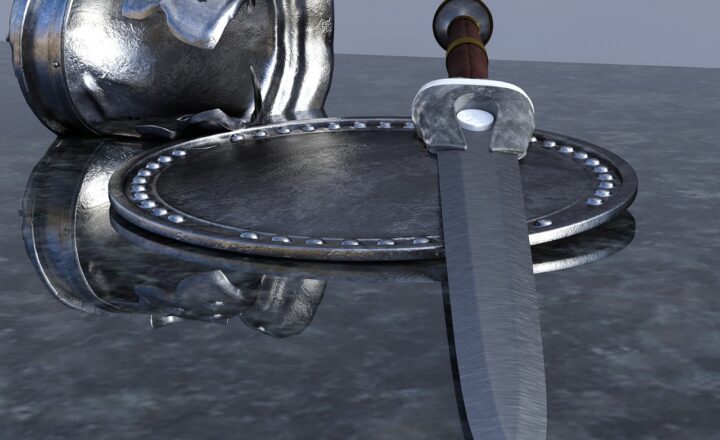The Fascinating History of Weaponry: From Crossbows to Cruise Missiles
November 14, 2024

The evolution of weaponry is a testament to human ingenuity, creativity, and the persistent quest for power and protection. It traces back thousands of years, revealing how each innovation has both shaped and been shaped by the societies that wielded it. In this comprehensive overview, we will explore the timeline of weaponry, from the rudimentary tools of our ancestors to the technologically advanced weapons used today.
1. The Dawn of Weaponry: Primitive Tools and Early Innovations
The use of weapons dates back to prehistoric times when early humans relied on rudimentary tools to hunt, protect themselves, and gain dominance over their environment. The earliest weapons were likely simple hand-held items such as rocks, sticks, and wooden clubs.
As humans evolved, so did their tools. The introduction of fire provided a new way to create more sophisticated weapons like the spear. With a sharpened stone or metal tip, early spears significantly enhanced hunting capabilities.
Scavenging resources became more organized with the advent of agriculture around 10,000 BCE. This led to the development of more specialized weapons, including:
- Atlatl: A spear thrower that improved the distance and accuracy of spear throws.
- Bow and Arrow: Possibly developed around 3000 BCE in various cultures, this weapon revolutionized hunting and warfare, offering increased range and precision.
The introduction of metallurgy around 3000 BCE marked a significant turning point in weapon development. Bronze weapons quickly became popular due to their durability and effectiveness, promoting a surge in organized warfare among emerging civilizations.
2. Ancient Civilizations and the Rise of Advanced Weaponry
As societies advanced, so did their warfare strategies and weapons. Ancient civilizations like the Egyptians, Greeks, and Romans made remarkable contributions to weaponry, which transformed military tactics and the landscape of warfare.
The Egyptian Bow and the Composite Bow
The Egyptians utilized the bow and arrow not only for hunting but also for warfare. They eventually developed the composite bow – made of wood, horn, and sinew – which provided greater power and range than previous versions.
Greek Phalanx and the Dory
The Greek phalanx formation introduced the dory, a long spear that enabled soldiers to engage enemies from a distance while remaining protected behind their shields.
Roman Innovations: The Pilum and Ballista
Romans optimized existing weapons, enhancing their effectiveness in battle. The pilum, a heavy javelin, was designed to penetrate enemy shields, while the ballista acted as an ancient artillery weapon, capable of launching large projectiles over great distances.
These advancements symbolized the growing importance of ranged and siege weaponry as effective tools in large-scale warfare.
3. The Middle Ages: Knights, Crossbows, and Gunpowder
The Middle Ages marked significant developments in weaponry, particularly with the incorporation of heavy armor and cavalry units. The introduction of crossbows around the 10th century proved to be game-changing due to their ability to pierce armor and deliver lethal force from a relatively simple mechanism.
The Crossbow: A Game-Changer in Warfare
Crossbows allowed individuals with minimal training to deliver a powerful shot accurately. Their penetration power meant that even armored knights could be vulnerable, leading to shifts in battlefield tactics.
Gunpowder: The Dawn of Firearms
By the late 13th century, gunpowder emerged as a revolutionary game-changer in warfare. The invention of cannons gave armies the ability to breach fortifications like never before. Initially, gunpowder was used in hand-held firearms such as the arquebus, which further changed warfare dynamics.
4. The Renaissance and the Birth of Precision Weapons
The Renaissance period saw a significant leap in engineering and craftsmanship. The development of more sophisticated firearms, like the matchlock and flintlock mechanisms, heralded a new era of precision weapons.
Matchlock and Flintlock Firearms
These innovations improved reliability and loading speed in comparison to earlier matchlock designs. The flintlock became particularly notable for its ease of use and effectiveness, shaping personal weaponry and military tactics significantly.
5. The Industrial Revolution: Mechanization and Mass Production
The Industrial Revolution of the late 18th and 19th centuries fundamentally changed weapon production. The introduction of mechanization enabled mass production of firearms that were more affordable and accessible than ever before.
“The Maxim Gun,” invented by Hiram Maxim, was the first portable machine gun, featuring a quicker rate of fire and greater killing potential than traditional firearms. This innovation foreshadowed a new era of warfare.
6. World Wars and the Rise of Modern Weaponry
The two World Wars brought about unprecedented advancements in weaponry, driven by tactical requirements and the necessity for military dominance.
Tanks and Aircraft
Armored tanks and military aircraft changed the nature of ground and aerial warfare. Innovations like the Spitfire, B-29 Superfortress, and the T-34 tank demonstrated speed, firepower, and tactical advantage that reshaped how wars were fought.
Nuclear Weapons: A New Era of Destruction
The development of nuclear weaponry during World War II marked the beginning of a global conversation about the ethics and impact of weaponry. The bombings of Hiroshima and Nagasaki showcased both the devastating potential of atomic bombs and the need for international control.
7. The Modern Era: Precision and Technology
Today’s weapons are characterized by their precision and technological enhancements. The advent of guided missile systems like cruise missiles has transformed modern warfare.
Cruise Missiles: Precision Strike Capability
Cruise missiles, which can strike specific targets with accuracy from hundreds of miles away, represent a shift towards remote warfare capabilities. Such systems minimize collateral damage and have become integral in military operations.
Conclusion: The Continuous Evolution of Weaponry
The fascinating history of weaponry illustrates humanity’s complex relationship with conflict, power, and technology. From rudimentary tools to advanced missiles, weapons have evolved alongside our societies, impacting everything from military tactics to geopolitical dynamics. Modern weaponry continues to advance, raising ethical and moral questions about warfare and its implications for humanity.
As we move deeper into the 21st century, we must acknowledge the lessons of the past and strive to create a world where these powerful tools are used wisely and responsibly.







